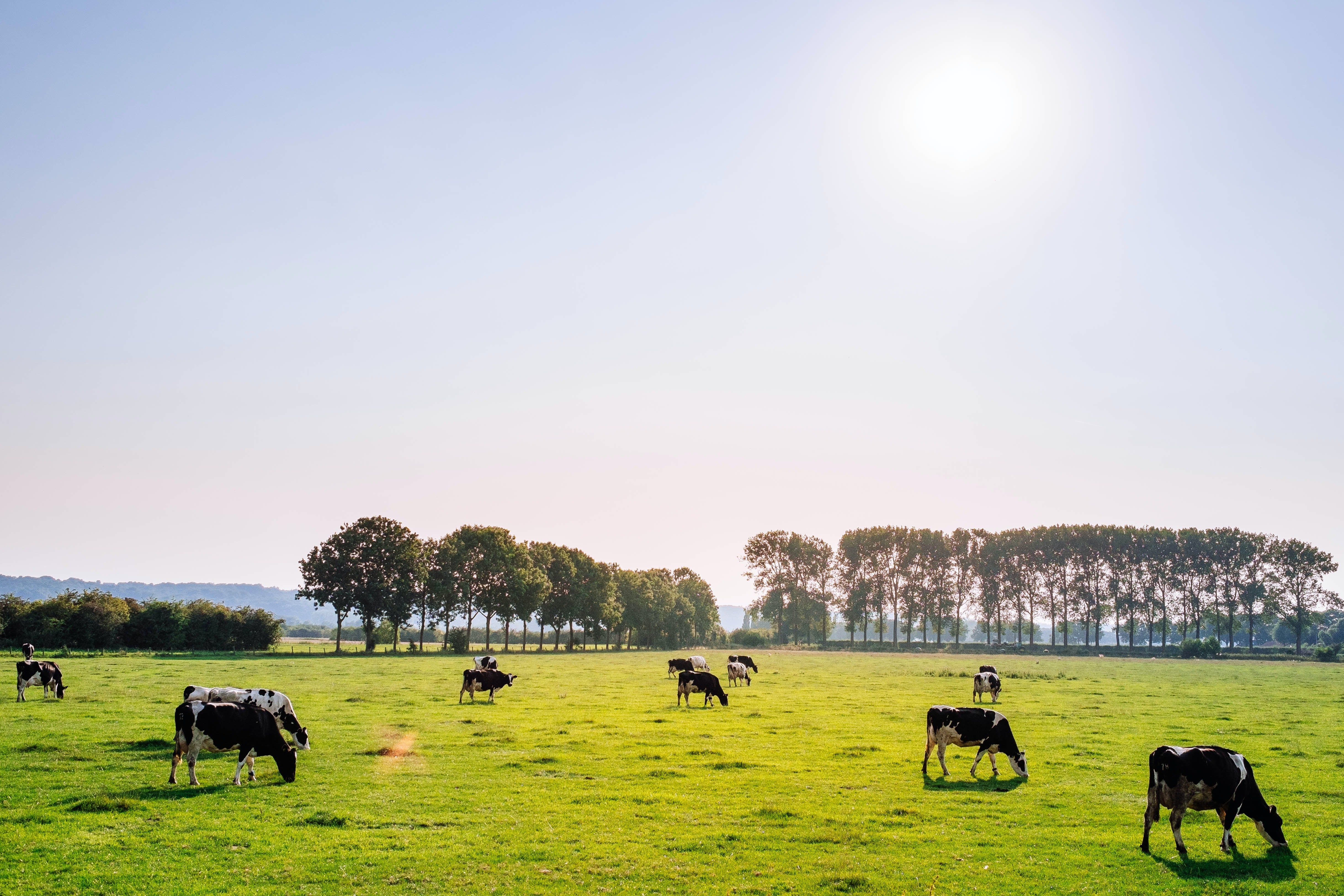
10 reasons why Free-Range Dog Food is better than Factory Farmed.
The saying “You are what you eat” also applies to dogs and the protein they’re ingesting. If you’re feeding dog food, made up of factory farmed beef for example, your dog is consuming the nutrient composition, or lack thereof, of those cattle. So, it’s worth knowing the difference between grass-fed (Free Range) and grain fed (Factory Farmed).

1. Free Range Farming promotes animal kindness – Free Range farming practices promote animal welfare; Farmers work hard to ensure animals have good housing and can behave as naturally as possible. Compared to Factory Farmed beef, which is raised in concentrated feed lots, containing tens of thousands of cattle in confined spaces. Feedlots allow cattle farmers to control the environment and fatten animals as quickly as possible. Calves are introduced to feed lots as young as 7 months, where they spend their days in congested, disease riddled conditions. If a cow can grow to slaughter weight in just the first year of his life, it is considered a success.
2. Factory Farmed cattle are fed an inappropriate diet, that your dog in turn consumes - Factory farmed cows are often fed genetically modified grains, growth hormones, non-therapeutic medicine, antibiotics, and supplements to promote faster growth and make up for the unsanitary, stressful, and crowded conditions. When your dog eats a diet of grain fed beef (this includes kibble), these antibiotics, hormones and drugs build up in your dog’s system too. The result is long term health issues and chronic disease.
3. The Social Impact of Factory Farming - The biologically correct diet for cows is fibrous grasses, plants, and shrubs. By feeding a diet of grains, protein supplements and growth hormones, a calf will grow from 80 – 1200 pounds in as little as 12 months. These so-called efficiencies have come at a price. Factory farming has turned raising cattle into a high volume, low margin business and led to the demise of the family farm.

4. Free Range cattle possess higher levels of essential vitamins and minerals - The varied diet of grass-fed animals result in higher levels of vitamins and minerals, particularly vitamins A and E, and minerals such as magnesium, calcium, and potassium.
5. Free Range beef is lower in fat - Grass Fed beef contains 25-50% lower fat content. When compared gram for gram, grass fed beef contains far fewer calories.
6. Free Range beef contains up to 5 times as much omega-3 – High levels of Omega-3 in your dog’s diet will help to improve the condition of your dogs skin and coat, boosts energy and joint health, balances the properties of omega-6 fatty acids, acts as an anti-inflammatory, improves cognitive development in puppies and cognitive function in older dogs.
7. Environmental impact of Factory Farming - Industrialised food production is the leading contributor to deforestation in the world today and is responsible for 15.4% of global green-house gas emissions. That’s 1.4% more than the entire transport sector!
8. Free Range cattle support Higher levels of trace minerals - zinc, iron, selenium, copper, and manganese. Trace minerals are required in small amounts to promote a balanced diet and have a wide range of health benefits. Trace minerals will support your dog’s immune system, musculoskeletal health and daily cognitive function.
9. Free Range farming is closing the loop and directly benefiting the environment - free-range farming practices a closed loop cycle whereby natural ecosystems feed animals and animal waste fertilises these same ecosystems.
10. Free-range farming is better for the health of the animals and the planet - Free-Range farming is more energy efficient than industrialised farming in almost every way and organic farms have shown that it’s possible to raise healthy animals with no fertilisers or pesticides and minimal use of antibiotics.

All Frontier Pets dog food products are made using 100% Australian Free Range meat.
References








Leave a comment
This site is protected by reCAPTCHA and the Google Privacy Policy and Terms of Service apply.